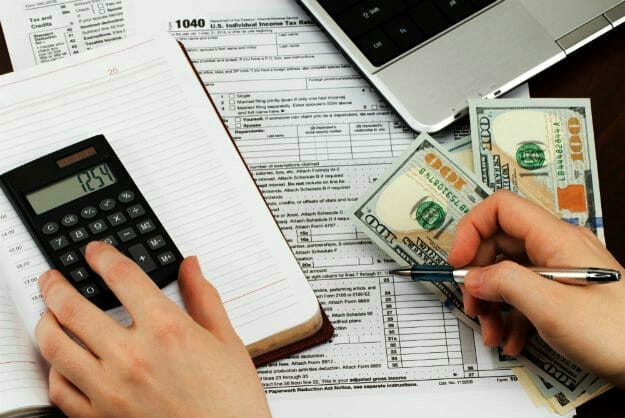The IRS tax forms or 1040 are used by individuals to file their taxes every year. Taxpayers can print out the form from IRS.gov or call the IRS directly and request the forms to be sent to their address. If it’s your first-time to file taxes, you’ll surely have questions to ask. So read on and learn how to fill out the IRS forms with the right information.
IRS Tax Forms: How to Fill It Out Properly
IRS forms 1040 Taxpayer’s Personal Information
The first part of the form will ask for the usual personal details such as name, complete address, and Social Security Number. It also includes the filing status whether a person is single, married, or filing jointly with someone. Exemptions are also part of this category where it requires to enter the spouse name, children, or other dependents. Make sure all dependents have a social security number.
Income Category
Taxpayers need to report any type of income on their tax forms. The IRS will take the W2, which lists income from wages and salaries. Lines 8a to 22 must be filled out except those that do not apply to the taxpayer. Get the total amount of income and place the amount on line 22 of the income section.
Adjusted Gross Income Section
This part helps reduce the amount of taxable income. Specific deductions in this section help pay fewer taxes. Complete every field that applies from lines 23 to 35 then put the result on line 36. The adjusted gross income is the result of subtracting the value in line 22 from the amount in line 36. Place the amount on line 37 as the adjusted gross income.
Tax and Credits
This section calculates the amount of income taxes. Copy the adjusted gross income onto line 38 of this section. Compare the amount in the “Itemized Deductions” and “Standard Deductions” then take the greater amount. To help calculate the Exemptions, refer to the number of boxes checked on page 1 for the dependents. Taxable income is the result of subtracting line 42 from line 41, but this only applies if line 41 has a greater value.
Moving along, many people don’t take advantage of credits because they don’t have them. Some of the common credits people use in the form are the child and dependent care expenses, education credit, and child tax credit.
Other Taxes
There are times when people end up paying additional taxes other than just federal income taxes. One example is the self-employment tax. If taxpayers have their own business, they pay medicare and social security with their portion plus the employer’s portion.
Payments and IRS Refund Status
Many people don’t make estimated tax payments due to it being withheld from their W2s. Usually, those who have their own businesses making a fair amount of money end up paying estimated taxes.
As for the EIC (Earned Income Credits), always check to see if your income might qualify for the EIC. This is a credit a lot of people can take but don’t take advantage of. Take note that the IRS will calculate the EIC if they see it placed in the margin on this section of the form. Adding all these up will show the total credits and payments, which is subtracted from the tax to determine if the taxpayer will get a refund or not. Lines 73 and 76 are respectively filled out if the taxpayer overpaid or owed.
Here’s a video by HowToWith GEO on how to get IRS tax forms:
This concludes the quick overview of the IRS tax form or form 1040. Remember, taxpayers still need to go through the individual forms to fill out some of the specifics like schedule A or schedule C for those who have their own business. To help you further, here’s a link to print out the form 1040.
Do you have any more suggestions for filling out IRS tax forms? Share your thoughts in the comments section below!


